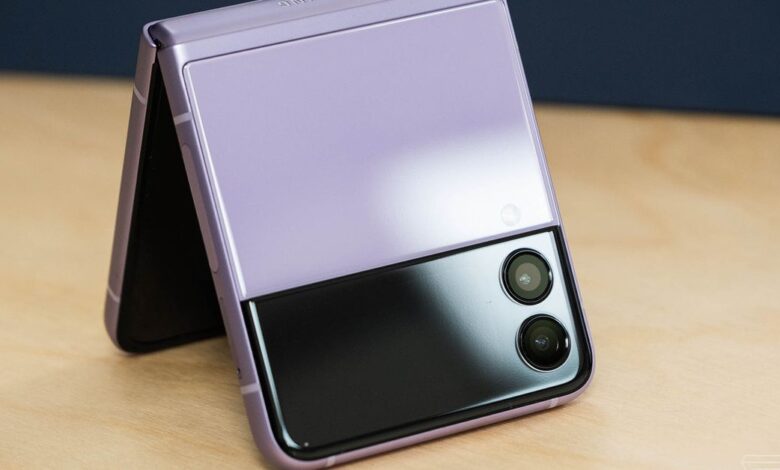Forget the Note — Samsung’s foldables are coming for the Galaxy S as well

[ad_1]
It’s been easy to dismiss folding phones as the stuff of science fiction, even after they became a reality two years ago. They were too expensive, too large, too compromised to make sense for most. Some flips instantly flopped. But in 2021, a folding phone appears to have just killed off Samsung’s long-running Galaxy Note — and I’m starting to wonder if they’ll destroy the flagship Galaxy S as well.
That’s because last month, Samsung promised to make foldables mainstream. And at $999, with fewer compromises than ever, Samsung’s new Z Flip 3 sounds dangerously close to a complete replacement for Samsung’s $999 Galaxy S21 Plus. For the same price, they’ve both got 6.7-inch 120Hz AMOLED screens, the latest Snapdragon 888 processors, the same memory and storage options, the same water resistance, and roughly the same dimensions, just with a slightly lighter frame and smaller battery, and one fewer camera around back.
Except one of these phones awesomely folds down to half its size, and the other one doesn’t. Assuming Samsung’s new durability improvements aren’t just talk and the plastic-covered screen doesn’t feel weird, I know which one I’d pick!
Would Samsung really axe its flatscreen Galaxy S in favor of foldables, though? It’s not as far-fetched as you might think — because after two years selling a ridiculous number of “flagship” phones, the Galaxy S handsets are getting hemmed in on all sides.
In 2019, the company tried to sell as many as 10 different flagship phones around the world, including four different Galaxy S10s and four different Galaxy Notes with largely identical core specs. 2020 brought 11 different flagships, if you count the Galaxy S10 Lite and Note 10 Lite. Five flagship phones may still be too many in 2021, if three of them aren’t selling particularly well.
Samsung Galaxy flagships, 2019-2021
| 2019 | 2020 | 2021 |
|---|---|---|
| 2019 | 2020 | 2021 |
| S10 | S20 | S21 |
| S10 Plus | S20 Plus | S21 Plus |
| S10E | S20 Ultra | S21 Ultra |
| S10 5G | S20 FE | Z Fold 3 |
| Note 10 | Note 20 | Z Flip 3 |
| Note 10 Plus | Note 20 Ultra | |
| Note 10 Plus 5G | Note 10 Lite | |
| Note 10 KlaytnPhone | S10 Lite | |
| Fold | Z Fold2 | |
| Fold 5G | Z Flip | |
| Z Flip 5G |
It’s not like Samsung would be killing off its bestselling handsets by ditching the Galaxy S, by the way. The company’s midrange A-series phones are actually its sales champs, after Samsung declared it would prioritize those handsets in 2018. Meanwhile, sales of Samsung’s Galaxy S phones have reportedly plummeted 47 percent over the past two generations, with the Galaxy S21 on track to be even more of a disappointment than the Galaxy S20 was the year before.
Does Samsung need the Galaxy S any more than it needs the Galaxy Note? For smartphone enthusiasts who want the best of everything — now including the ability to fold out into a tablet — the Z Fold is already taking the place of the Note. Next year, with some camera upgrades, it could theoretically dethrone Samsung’s “Ultra” phones, too. That could leave room for the Flip to become Samsung’s new default flagship, with folding as the “Next Big Thing” that Apple doesn’t offer its customers (at least not yet). For everyone else, there’s Samsung’s increasingly powerful Galaxy A series, which will likely get even more aggressive now that Xiaomi has overtaken Samsung in Europe.
If it happens, I’d expect a transition period: the flagship phone category still starts around $700, not the $1,000 that Samsung is asking for the Flip 3, so the company would probably keep around a Galaxy S22 FE at a minimum. (The Galaxy S21 FE is still pending.)
And even if Samsung does decide to deemphasize flatscreen flagships, that doesn’t mean the Galaxy S name will necessarily go away. It might just become what Samsung calls its folding phones someday. Galaxy S is the brand that brought Samsung into the spotlight over the past decade, so there’s value and precedent to transfer the name to a new design: when Samsung first began experimenting with curved glass screens, it started as the Galaxy Edge, but those curves became the norm with the Galaxy S8. If Samsung makes foldables the new normal, we might see the same.
All I know for sure: Samsung’s bloated lineup of flagships was getting pretty ridiculous — remember the Note 10 specifically for blockchain? — and it doesn’t need to be that way.
Related:
[ad_2]
Source link






